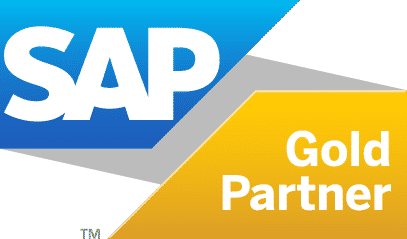
Systems, Applications, and Products in Data Processing (SAP) stand out as a cornerstone for organizations seeking efficiency, integration, and data-driven decision-making in the ever-evolving business technology landscape. As businesses continue to leverage SAP solutions, understanding the intricacies of these processes becomes paramount for success.
SAP Upgrade and Migration
A SAP upgrade involves transitioning from an older version to a newer one, ensuring organizations stay current with the latest features, security patches, and improvements. Migrations, on the other hand, involve the transfer of data and applications from one environment to another. Several key considerations come into play when undertaking a SAP upgrade and migration.
The chosen SAP version must align with the organization’s business needs and objectives. Careful planning is required to assess the impact of the upgrade on existing processes and customizations. Organizations need to determine the most suitable data migration strategy. This involves transferring data from the old system to the new one while minimizing downtime and ensuring data integrity.
A successful SAP upgrade often hinges on effective downtime management. Businesses cannot afford extended periods of inactivity, and meticulous planning is essential to minimize disruptions. From improved system performance to enhanced functionality, organizations that navigate the complexities of upgrades effectively reap substantial rewards.
SAP Implementation
This is a critical phase in the lifecycle of SAP utilization, representing a transformative journey for businesses. Choosing the right SAP implementation partner is a decision that impacts the success of the project.
When selecting an SAP implementation company, several criteria come to the forefront. The partner’s expertise and experience in SAP implementation are paramount. The intricacies of SAP solutions require a nuanced understanding, and a seasoned implementation partner can navigate challenges with finesse. Industry-specific knowledge is another critical factor, as it ensures that the implementation aligns seamlessly with the unique requirements of the business sector.
SAP Managed Services
As businesses increasingly recognize the benefits of outsourcing SAP management, the realm of SAP managed services has gained prominence. This approach offers a range of advantages, from cost-effectiveness to the ability to focus on core business functions.
One of the primary advantages of SAP managed services is cost-effectiveness. By outsourcing SAP management, organizations can avoid the significant upfront costs associated with maintaining an in-house SAP team. Instead, they can opt for a scalable and flexible model that aligns with their specific needs.
The focus on core business functions is another compelling reason organizations embrace SAP managed services. By entrusting the management of SAP systems to external experts, businesses can channel their resources and attention towards their core competencies. This strategic shift enables organizations to enhance overall operational efficiency and agility.
Access to specialized skills is a key driver for organizations opting for SAP managed services. Managing SAP systems requires a specific skill set, and outsourcing to specialized service providers ensures that businesses benefit from the expertise of professionals well-versed in the intricacies of SAP solutions. Profiles of top SAP managed services companies shed light on their services, client satisfaction levels, and industry recognition.
Challenges and Best Practices
Despite the myriad benefits of SAP projects, challenges are inevitable. Common hurdles include resistance to change, data migration complexities, and the need for extensive training. However, overcoming these challenges is feasible with the right approach.
Effective communication is a cornerstone of successful SAP projects. Ensuring that all stakeholders are well-informed and engaged throughout the process minimizes misunderstandings and resistance to change. Change management strategies further contribute to project success by proactively addressing concerns and fostering a culture of adaptability.
Continuous training and support are integral components of SAP project success. As SAP solutions evolve, ensuring that users are adept at leveraging new features and functionalities is crucial. Training programs that cater to diverse skill levels and learning styles contribute to a workforce that is not only proficient but also adaptable to evolving SAP landscapes.
Future Trends in SAP Services
Looking ahead, the SAP landscape is poised for continued evolution, with several trends shaping the future of SAP services. The advent of cloud computing has had a profound impact, offering organizations increased flexibility, scalability, and accessibility. As businesses increasingly embrace cloud-based solutions, the integration of SAP with cloud platforms becomes a key focus area.
Artificial intelligence and machine learning are making significant inroads into SAP services. These technologies enhance automation, decision-making processes, and predictive analytics within the SAP ecosystem. From intelligent automation of routine tasks to predictive maintenance, AI and ML are set to revolutionize how organizations leverage SAP solutions.
Conclusion
Navigating the SAP ecosystem involves a strategic approach to upgrades, implementations, and managed services. Understanding the nuances of SAP upgrades, selecting the right implementation partner, and exploring the benefits of managed services contribute to the overall success of SAP initiatives. As the SAP landscape continues to evolve, embracing future trends and leveraging emerging technologies position organizations to thrive in a competitive and dynamic business environment.
The journey through the SAP ecosystem is one of transformation, efficiency, and strategic growth for businesses willing to embrace the possibilities it offers.




